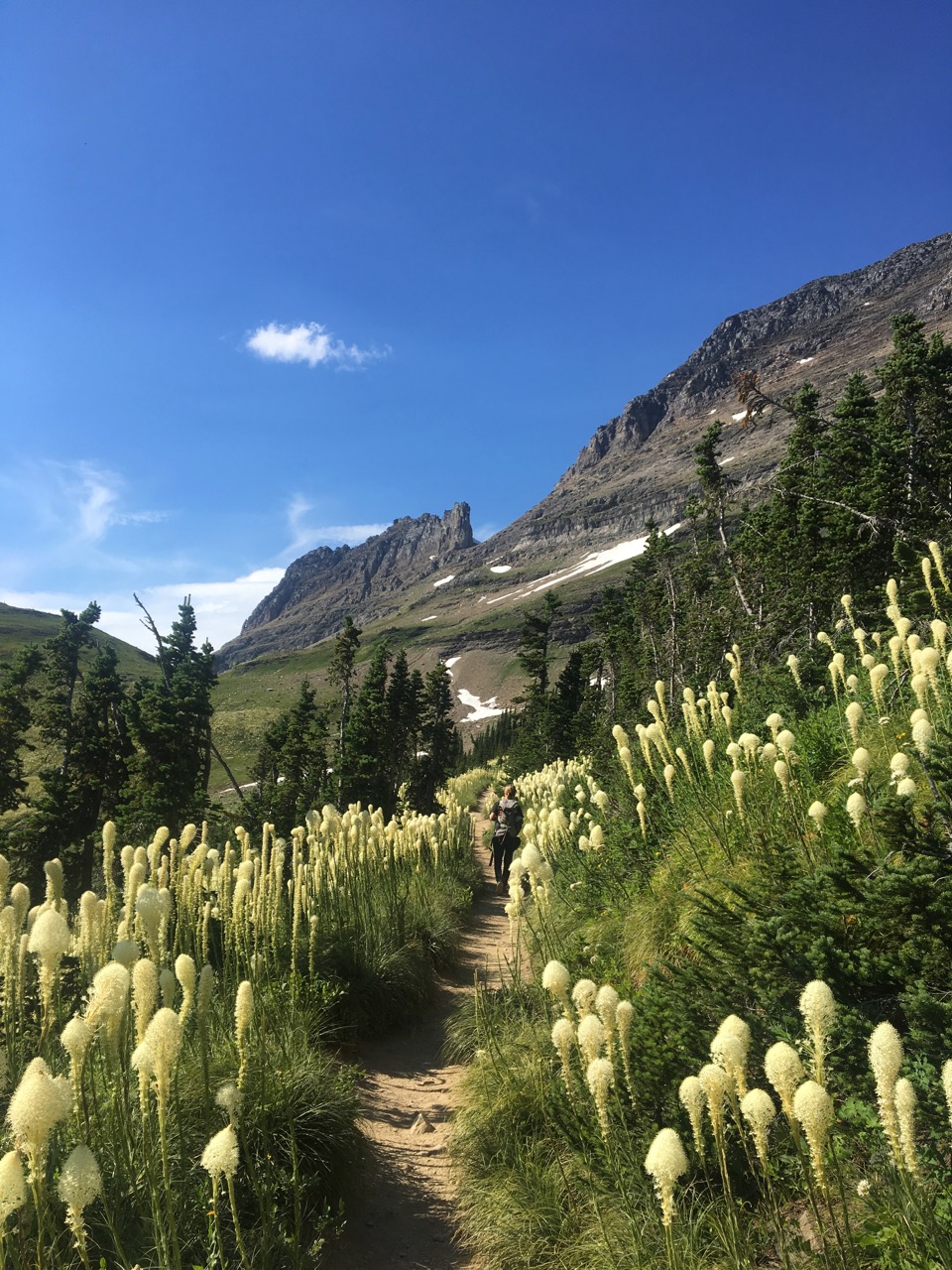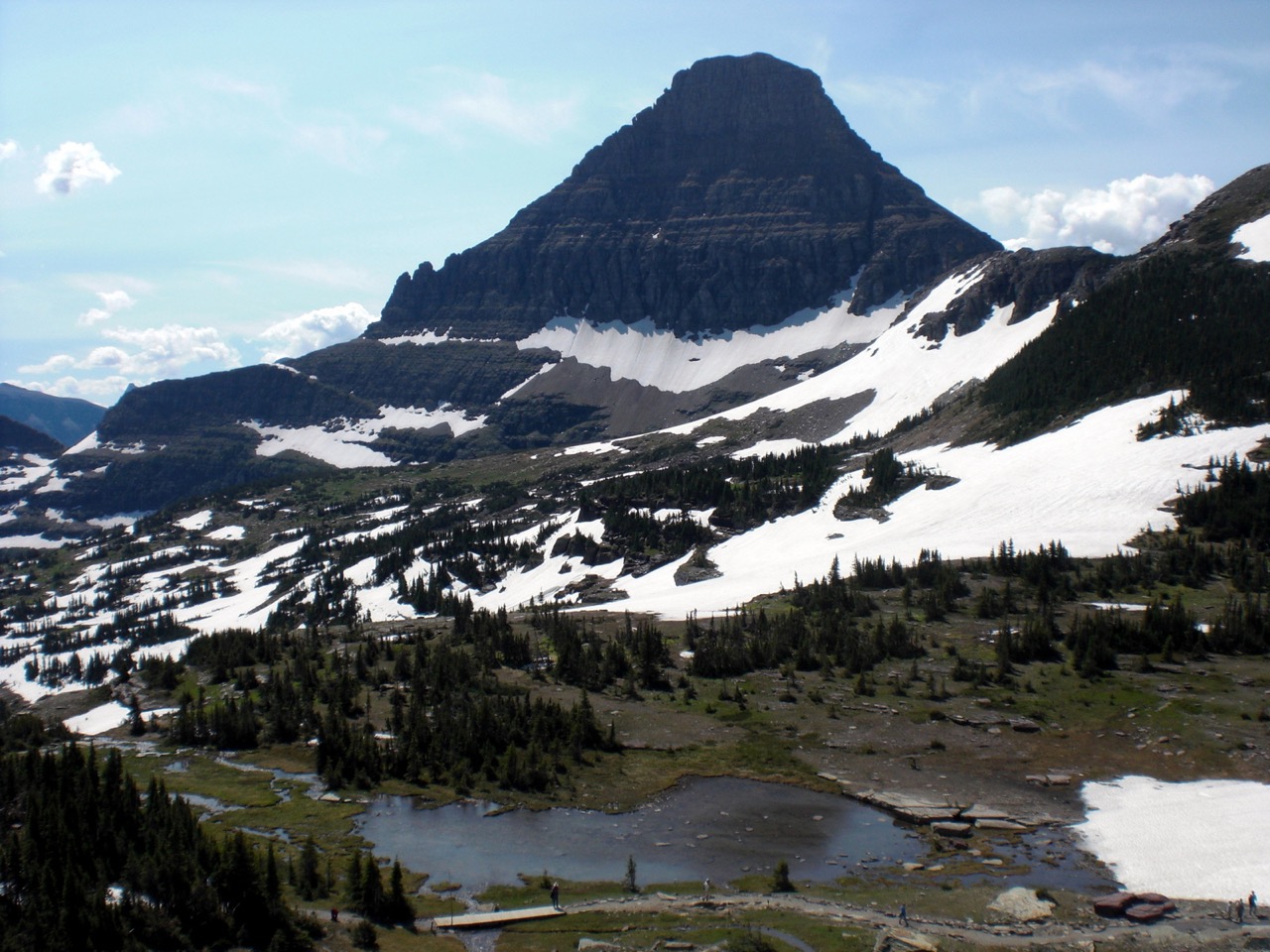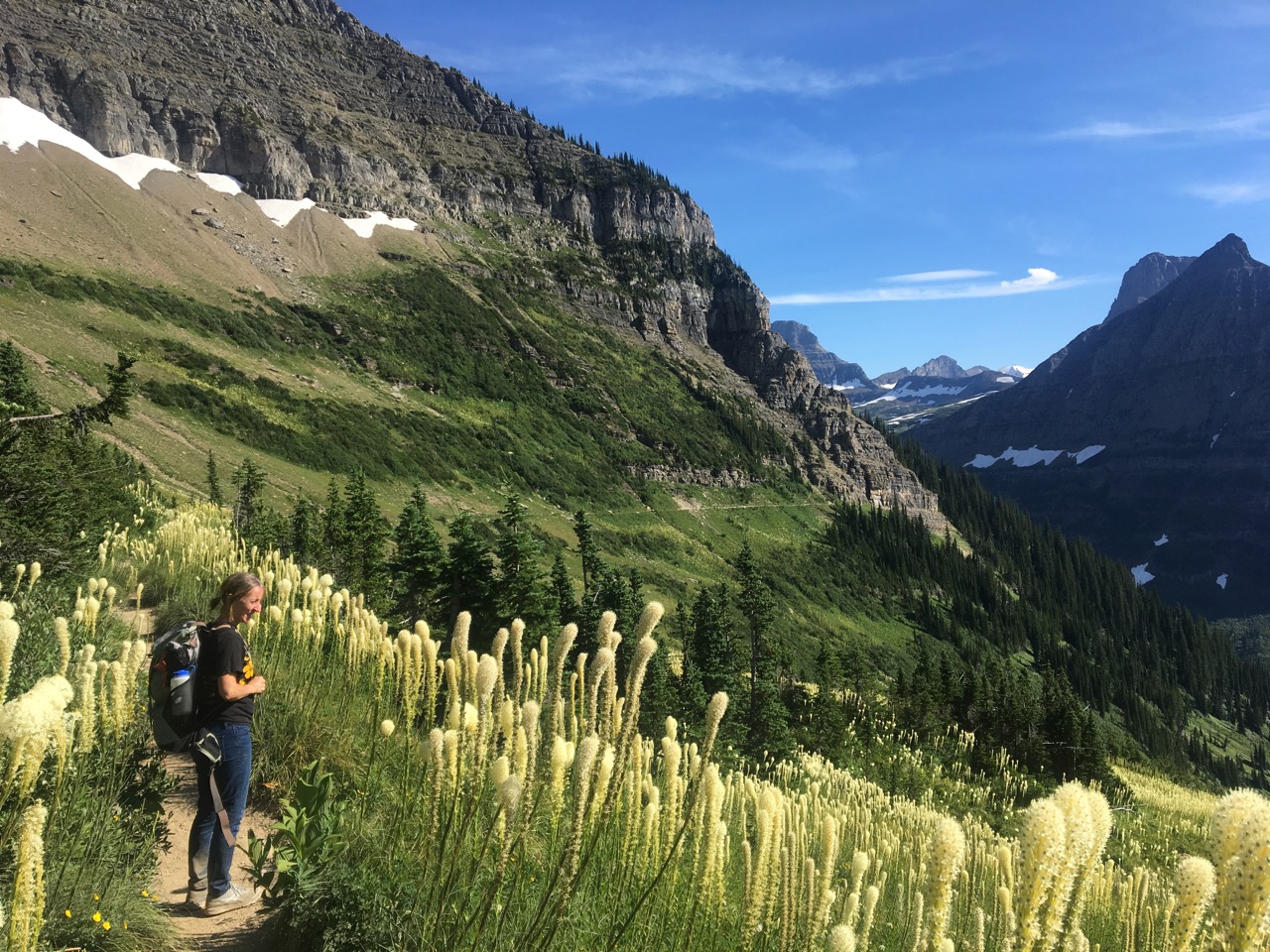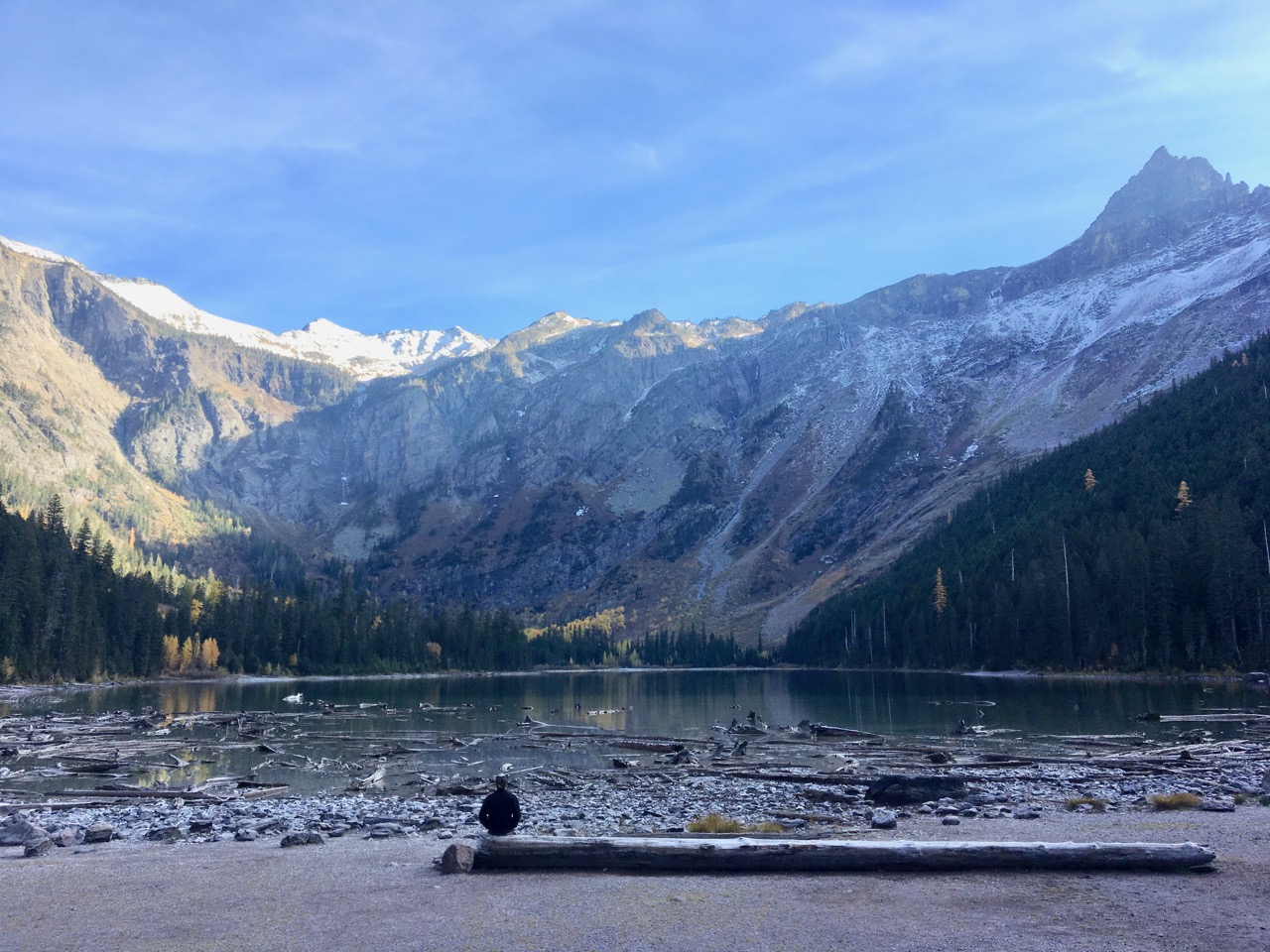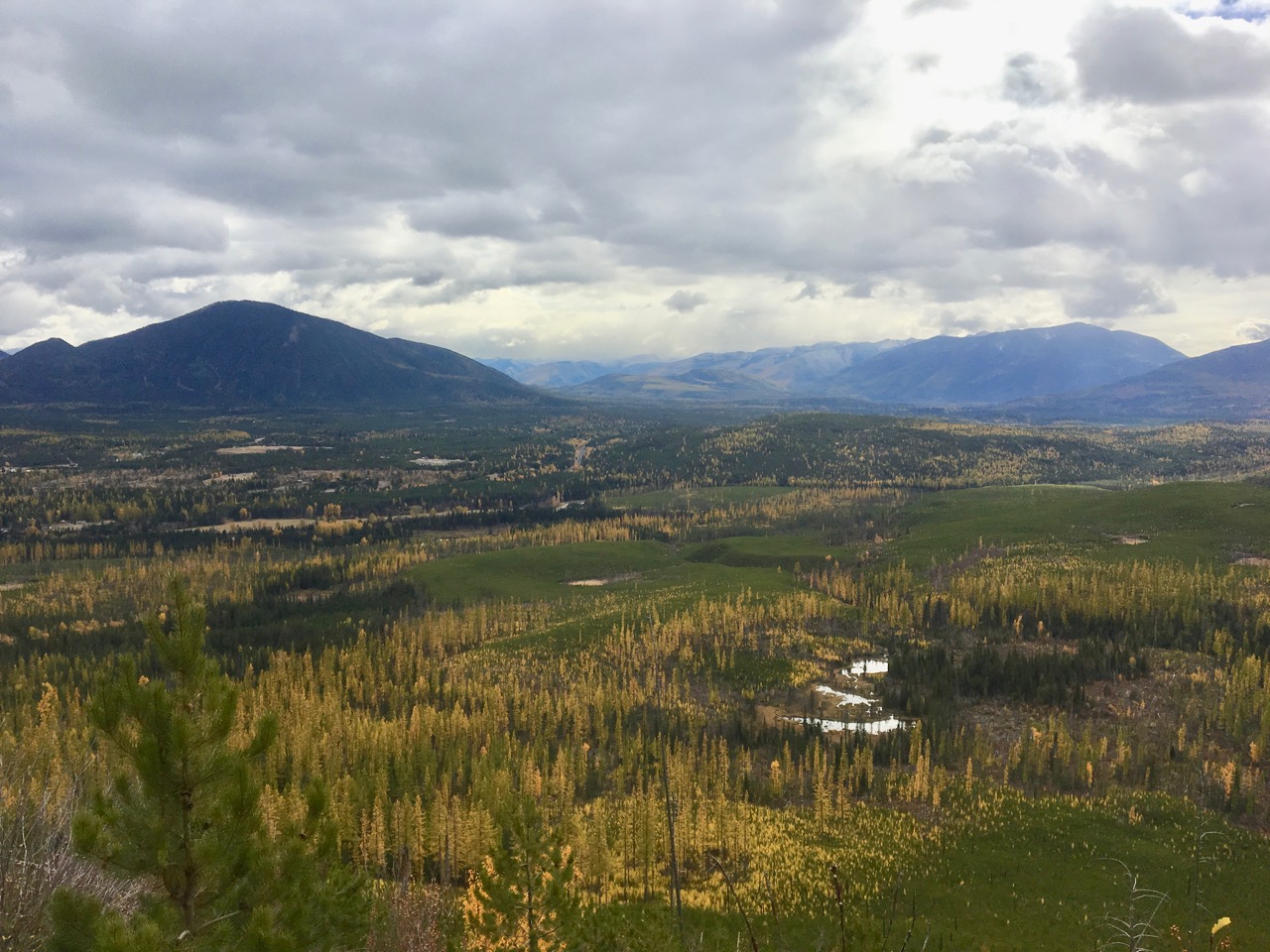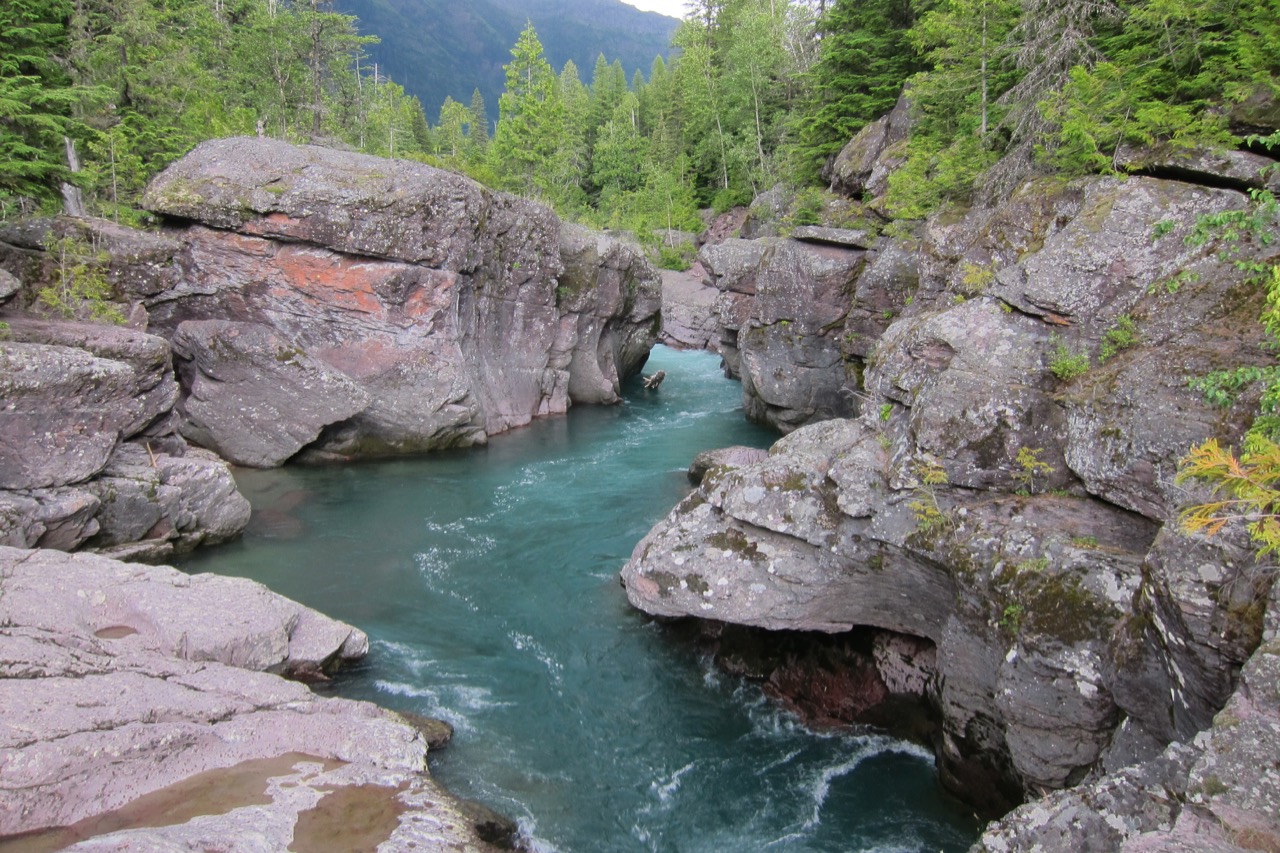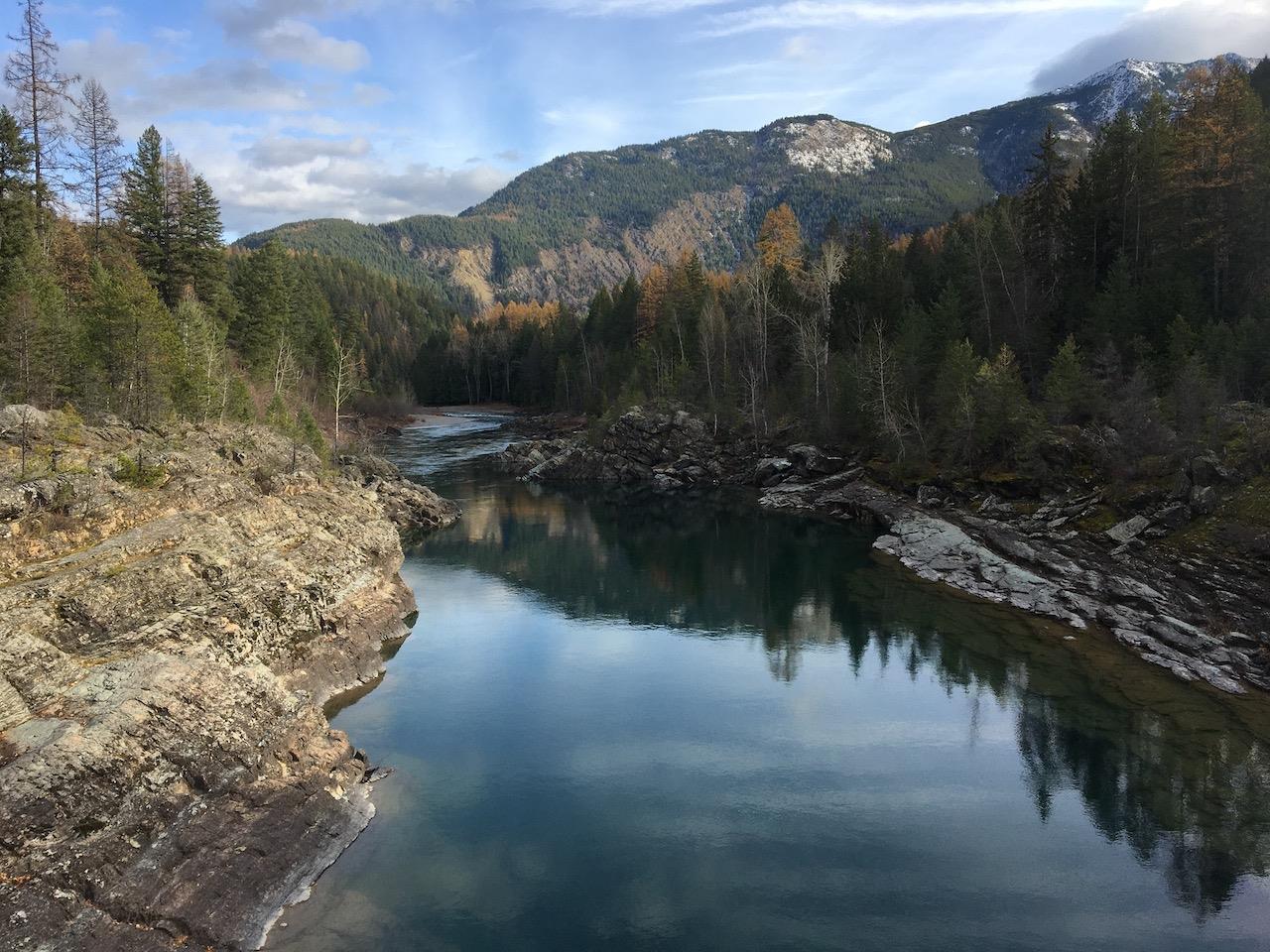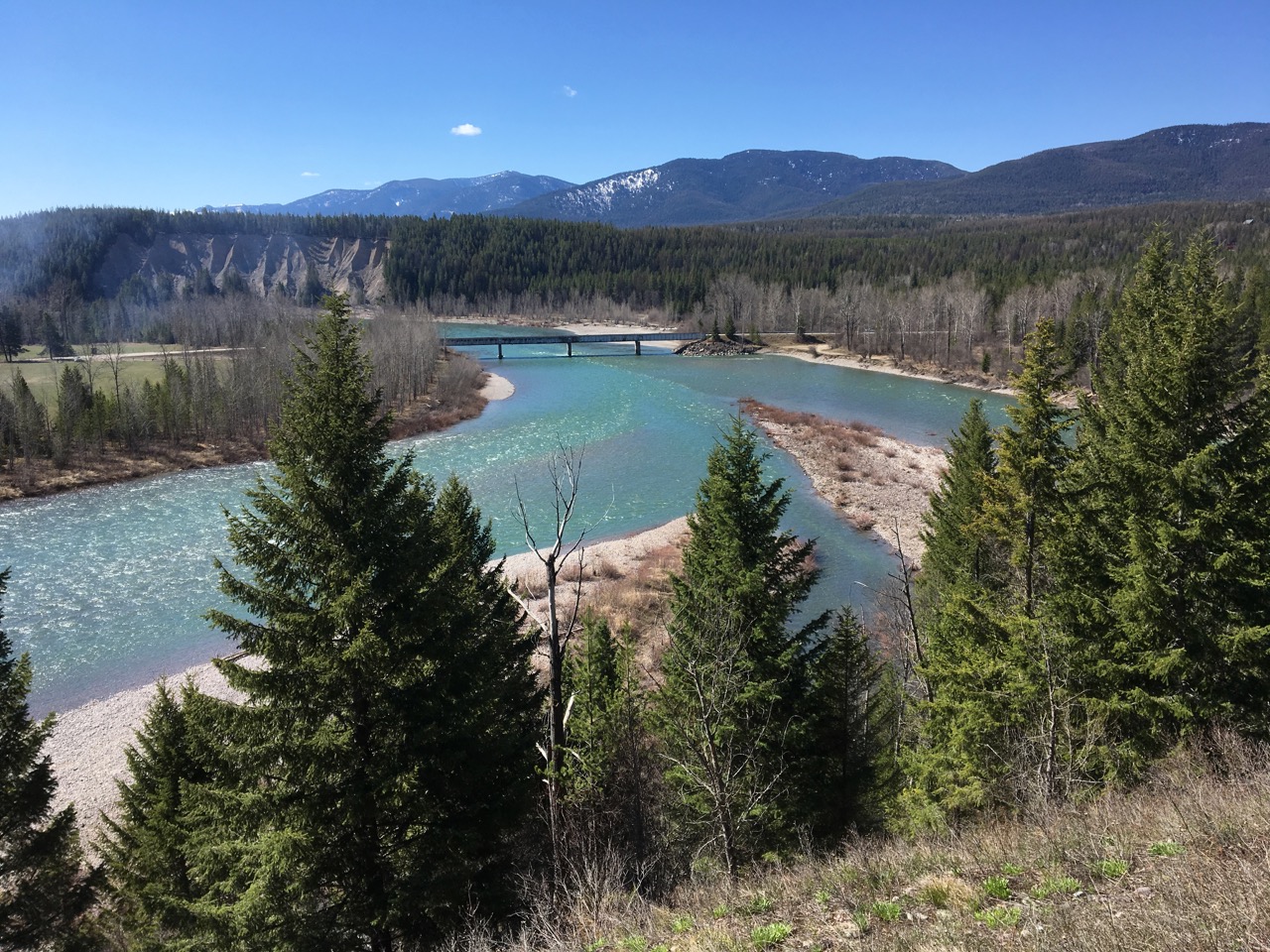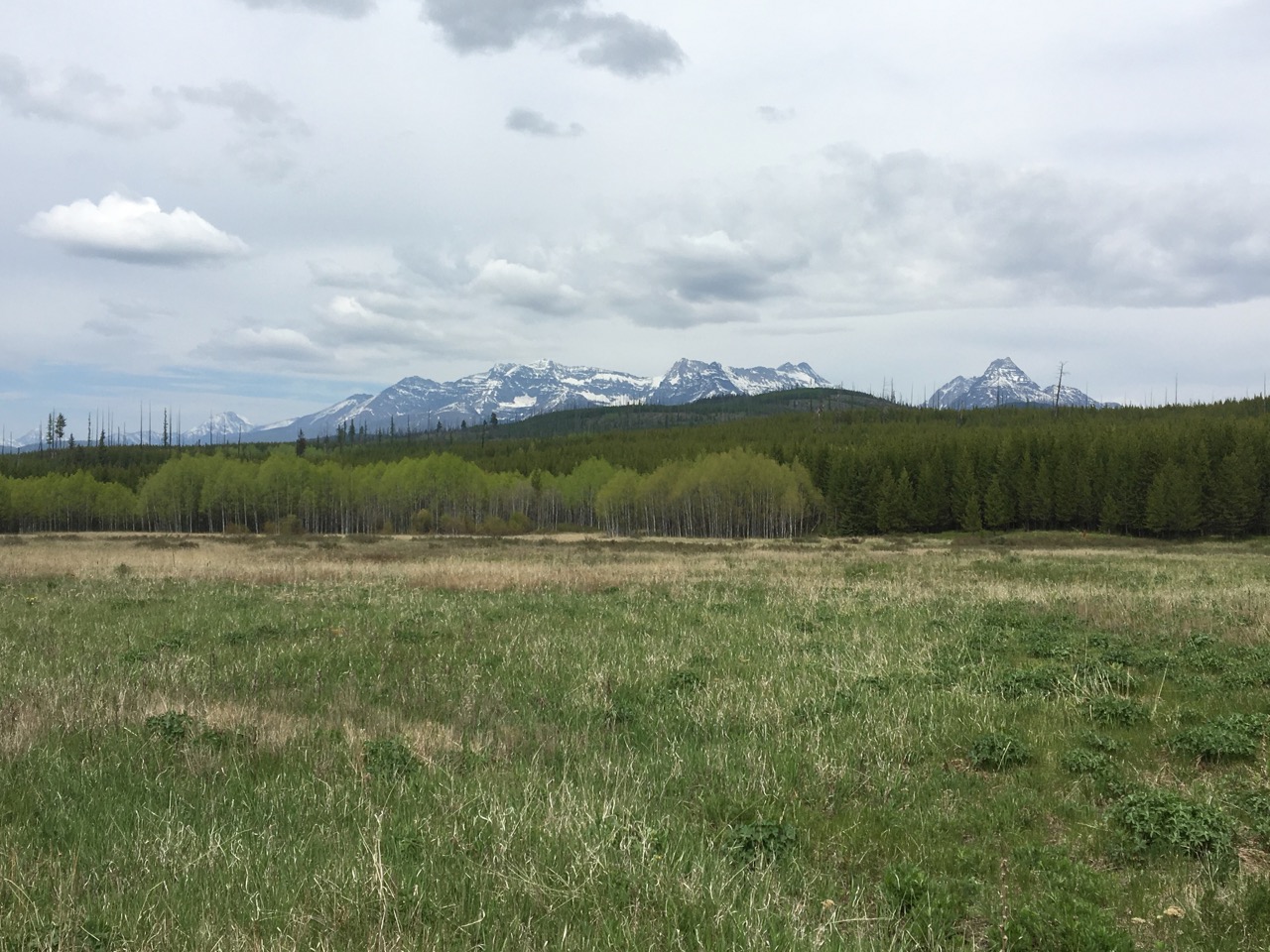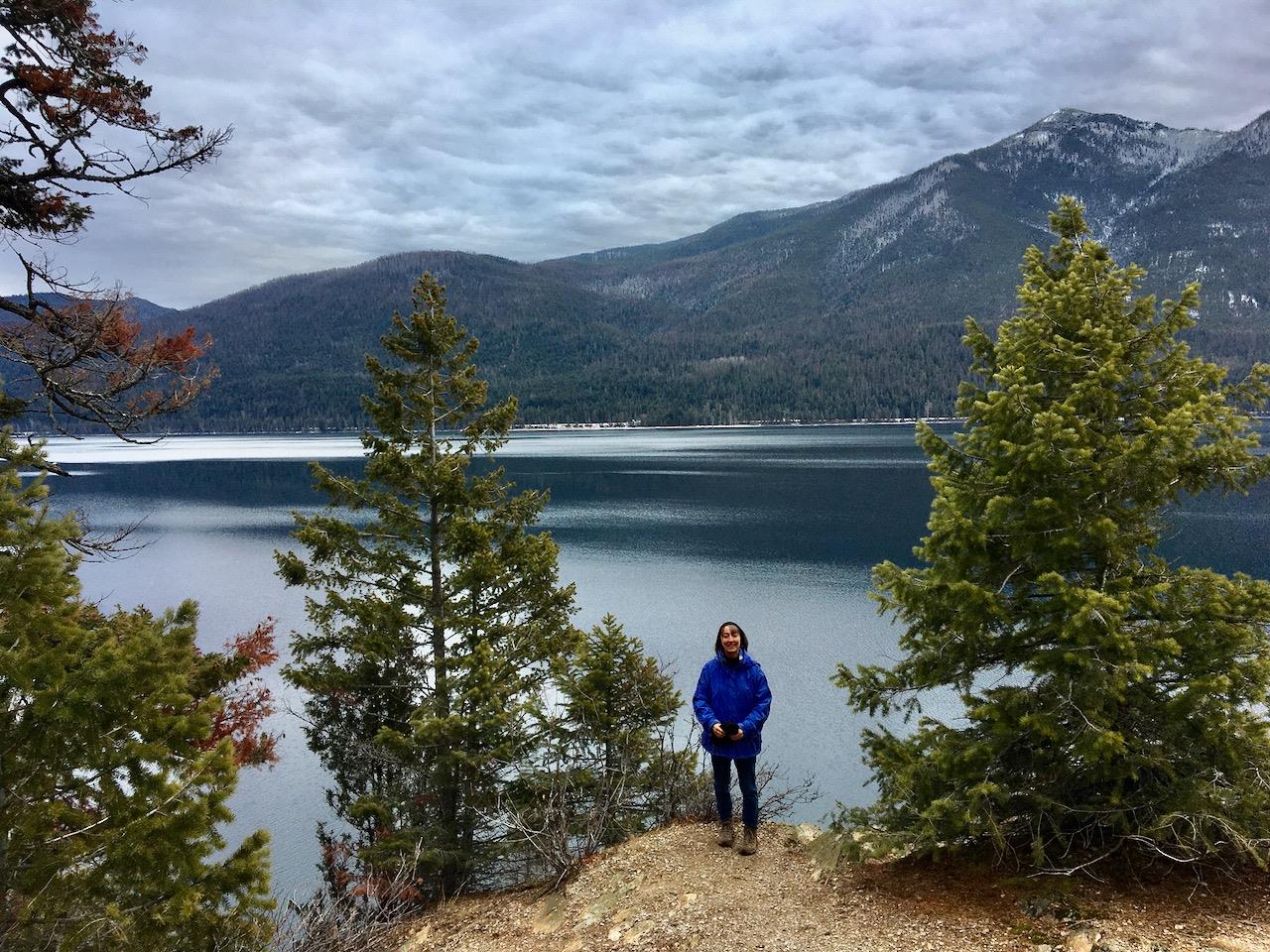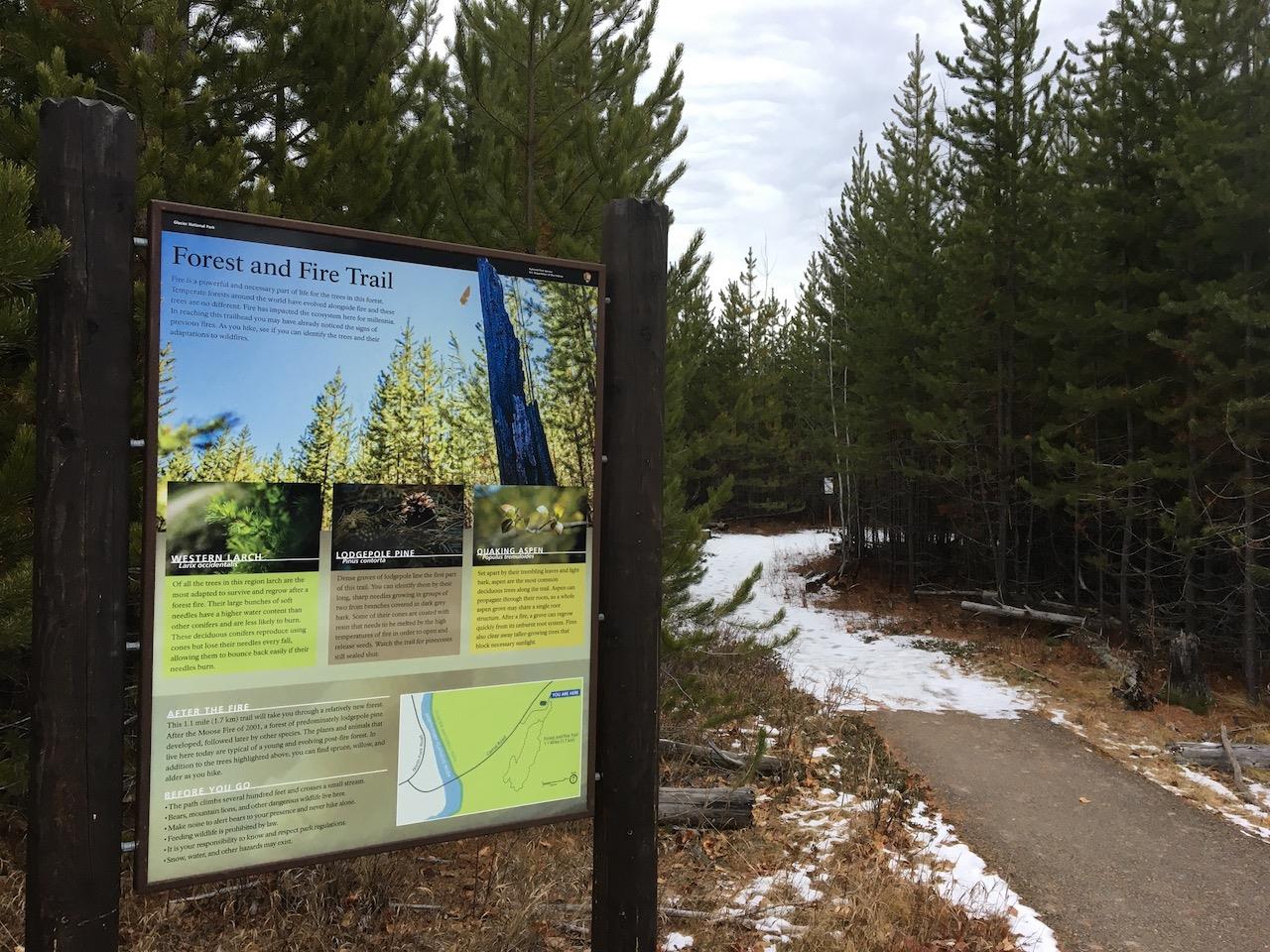One of the most popular trails in the park, the Avalanche Lake Trail starts at the end of the short Trail of the Cedars walk, skirts a gorge, then ascends to a large glacial cirque containing long waterfalls and the waters of Avalanche Lake. When parking, grab the first spot you see, as parking spots are limited here. Start out on the Trail of the Cedars and gaze at the huge old growth cedars that have been growing here for centuries. At the east end of the Trail of the Cedars Loop, the Avalanche Lake Trail branches off and follows the Avalanche Creek Gorge, where green moss contrasts the red Grinnell argillite water carved rocks. After the gorge, the trail ascends through a dense cedar, hemlock, larch and fir forest. Hidden Lake at Logan Pass drains off into a canyon to the left as you ascend. Once you arrive at the foot of the lake, take in the several waterfalls draining from Sperry Glacier over the head of the ridge. The trail continues through some swampy areas around the south side of the lake to eventually arrive at the head of the lake.
Below left: Avalanche Creek Gorge from above
Below right: View from the head of Avalanche Lake looking west
